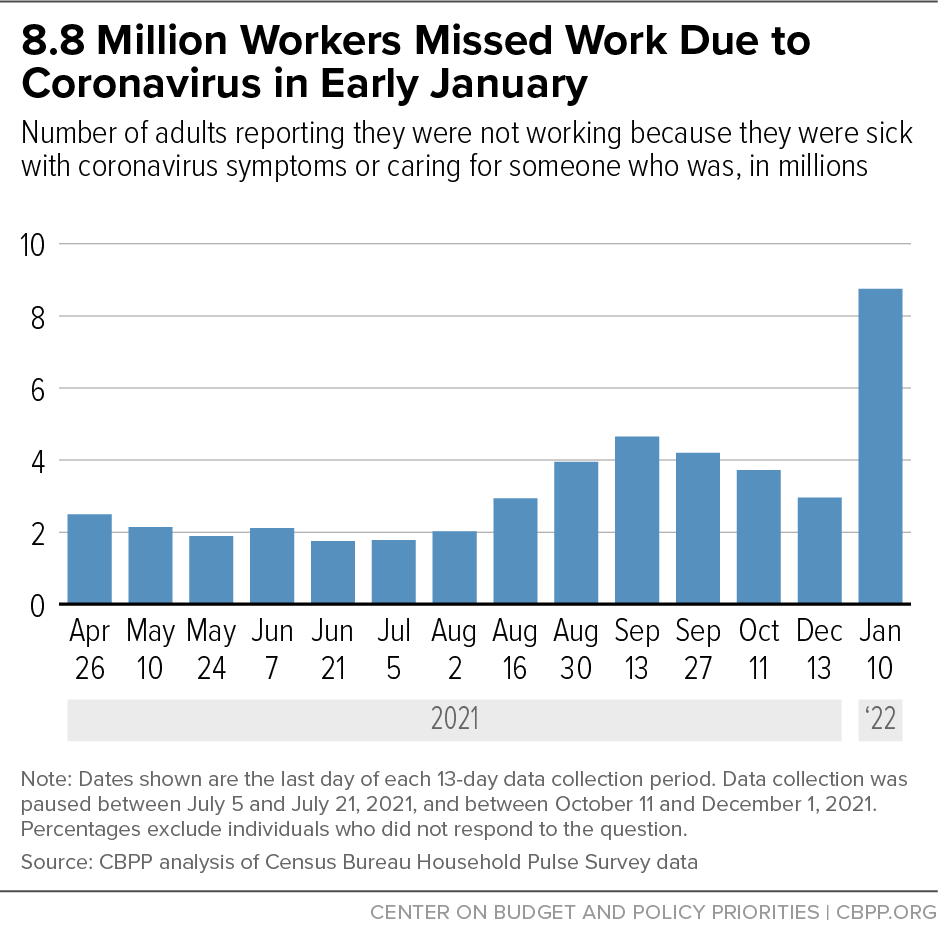BEYOND THE NUMBERS
Even as the United States faces its largest surge in COVID cases, it lacks a key policy for public health and economic security: paid leave. The U.S. has long been an outlier among similarly wealthy nations for its lack of comprehensive paid leave. And now — unlike earlier in the pandemic — it even lacks emergency paid leave for workers infected with COVID, caring for family members with COVID, or facing school or child care interruptions due to COVID. Policymakers should quickly reinstate and expand an emergency paid leave plan for COVID reasons, and then they should create a permanent and comprehensive paid leave program.
Nearly two years into the COVID pandemic, it’s clear that when workers lack paid sick leave, it can cause significant harm to them and their families. It can also hurt their co-workers and communities, because financial pressures often lead ill workers to go to work. Two-thirds of hourly workers reported going to work sick in the fall of 2021, primarily for financial reasons, according to recent Harvard University survey results. This contributes to the spread of COVID, particularly of the extremely infectious omicron strain, causing more workers and their families to become ill, worsening the surge in cases, and adding to the strain on hospitals and basic services.
The lack of paid medical and caregiving leave can also cause significant financial hardship when workers take leave without pay because of COVID. In early January, a record high number of workers — 8.8 million — missed work because they had COVID symptoms or were caring for someone who did, according to the Census Bureau’s Household Pulse Survey (see chart).
While some of those workers had paid leave at work, a large share did not — particularly those working for low pay. Almost 1 in 4 private-sector workers, and nearly half of those in the bottom quarter of earners, do not have even a single day of sick leave, according to the Bureau of Labor Statistics. Workers of color — who disproportionately work in front-line jobs — are less likely than white workers to have paid sick days. Taking unpaid time off for an isolation period of five or more days threatens many families’ ability to afford the basics.
The U.S. has provided much-needed paid COVID leave before. In March 2020, policymakers came together on a bipartisan basis to expand access to paid sick days and caregiving leave for COVID-related reasons — the first nationwide paid leave program. Though the law was flawed — it excluded about half the workforce — it helped over 750,000 firms pay their workers when they had to miss work for COVID-related reasons, according to the Government Accountability Office. The emergency COVID leave program prevented 15,000 COVID infections per day, researchers found, even with limited coverage and at a time of a far less infectious strain of the virus.
But the paid leave provisions have expired, once again leaving the workers who were covered without a backstop as COVID has surged. If policymakers reinstate and expand COVID paid leave now, it would be available to reduce infections and help families financially for both the current surge and any future waves of the virus. If there are no further waves, it simply wouldn’t be used.
Ultimately, workers need basic paid sick leave and a national paid family and medical leave policy that ensures that when they are sick or need to care for a sick loved one — whether due to COVID or cancer — they can take time off without losing their job or suffering a financial setback that can be disastrous. But in the near term, with the future of COVID uncertain, it is urgent that policymakers make it easier for people to take time off work when they contract the virus or need to care for a loved one who has it, both to reduce financial strain and as a public health measure to ensure that people stay home when they are infected.

